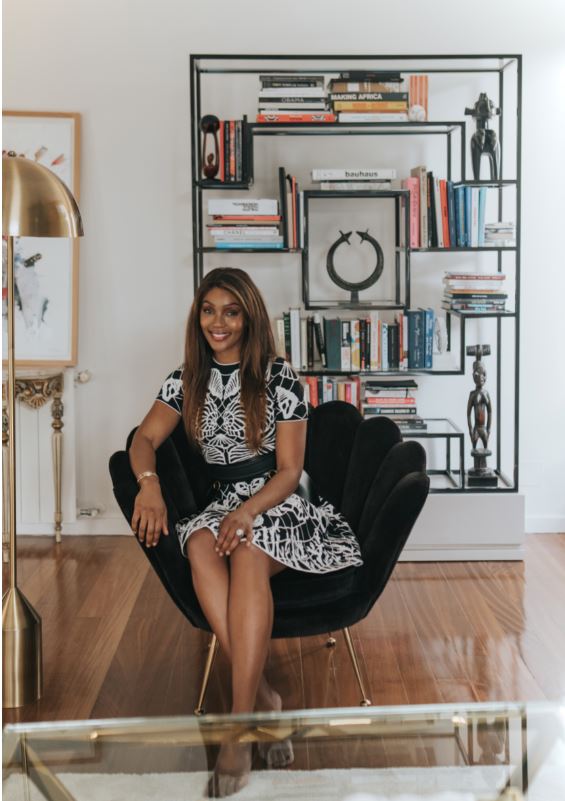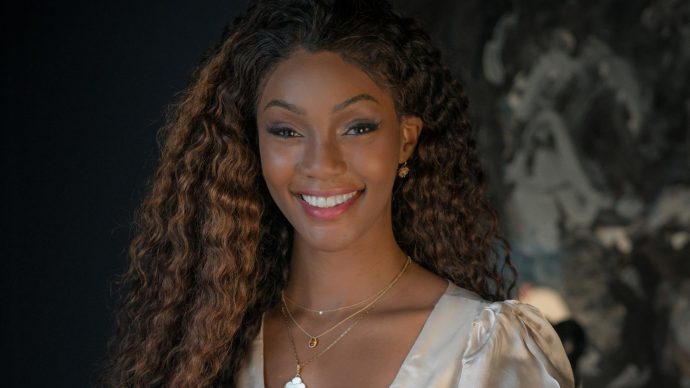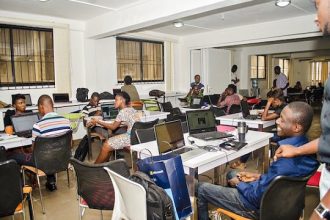Her own experience empowered her venture. Back in the days, Simi LAUNAY, a Nigerian woman trained in Finance wanted to enter the art field. Full of passion and convinced of her skills, she did everything possible but did not meet success. Determined, she opened her own art gallery based in Portugal. UNGALLERIED, is home for collectors willing to have a significant impact on artists. UNGALLERIED sells piece of arts, offers an advisory service to collector, and delivers residential and commercial design projects. We had a deep conversation with her about her daily activity.
Inspire Afrika Magazine: What made you switch from Finance to Art – What was your wake-up call?
Simi LAUNAY: I have always been a creative, I love expressions of beauty, from interiors to art and fashion, so I feel like I was somehow destined to take this path. The catalyst to make the switch for me was relocating to Portugal as I was able to take a step back professionally and decide if what I was doing was fulfilling enough. The answer was no so I sought to make a tangible change and took up art as it was my first love and I feel so free when I am creating.
I.A: In your opinion, why were you facing difficulties when approaching galleries back in the days?
S.L: I had no experience in dealing with the art world. I didn’t understand the codes for entry, the necessity to be ‘discovered’ rather than proactive or why I needed to have a formal education in the arts when I had talent, time, a body of work and passion. The fact is that it is notoriously difficult to find gallery representation. As an artist, you have to fit into the program of many brick and mortar galleries for them to add you to their roster. Galleries are commercial entities, so essentially they select artists that they think they can sell and in doing so, they also decide what is available to the market.
Discover Chifor (Tito) Valery, a creative from Cameroon
I.A: The name of your gallery is very impactful: Ungalleried. Is it because you feature people with talent who are going through the same experience you faced?
S.L: Thank you! And that is absolutely why I thought of the name. I had a Eureka moment and realized that there must be so many other artists who had faced a similar situation that I was in. So I wanted to pivot this experience into something positive that would open doors, unify and empower other artists to be able to sell their work and also to give the opportunity to collectors to have the chance to invest in high quality, original art at relatively low entry point to collecting, as the work we sell is under £10,000.
 I.A: What are the benefits to have a part digital/part physical gallery?
I.A: What are the benefits to have a part digital/part physical gallery?
S.L: Being digital means that we can exhibit our artists all over the globe and our collectors can buy the art that they love directly from these artists irrespective of where they are based. Being part physical means that we can host pop-up exhibitions where we have collector and artist hubs. We plan to have our first later this year in Berlin, Brussels and Zurich. It will be a wonderful opportunity for our collectors and artists to come together, allowing them to see the work in person and learn more about the artists.
I.A: What are the limits Ungalleried is erasing between artists and their potential clients?
S.L: We have an online magazine within which we regularly have features for our artists allowing them to gain insight into their studios, methods, inspirations and visions for the future. It is so important for collectors to feel invested in the careers of the artists they collect so that they truly become a part of their journey as artists. Being a patron to the artist is something we are trying to encourage more of at Ungalleried as it is so essential to the careers of artists.
I.A: African artists have a hard time gaining financial viability. Why?
S.L: The arts in Africa is still a burgeoning sector and widely underfunded across countries. In the UK, the arts contributes around £10.8 billion a year to the UK economy. That’s circa 165 per capita. If you do some crude mathematics, then this would equate to roughly 32 billion in the Nigerian economy if we had a similar amount of investment and support for the arts. It’s not comparing an apple to an apple but this shows the potential that we have to diversify the Nigerian economy through the arts.
I.A: What do you feel is the biggest obstacle African Women artist – or working in your field – tend to face?
S.L: I think that globally women face a challenge of attaining gender parity within the arts. This problem is exacerbated within a developing market setting such as Africa. In Europe and the U.S. works by female artists only comprise a small percentage of permanent collections and only two works by women have ever made it into the top 100 auction sales. So if we extrapolate these figures into an African setting with our own historical and socio-political struggles for female equality, it is east to see that women in Africa have perhaps more challenges in gaining credibility.
I.A: As a Nigerian living abroad, what will be your tips for artist willing to reach the world?
S.L: Look for a global platform to amplify your voice. Learn as much as possible from other artists who have been successful in other markets and use social media as much as possible to engage followers and collectors. Thanks to Instagram, you can travel through and touch the world without leaving your studio.





